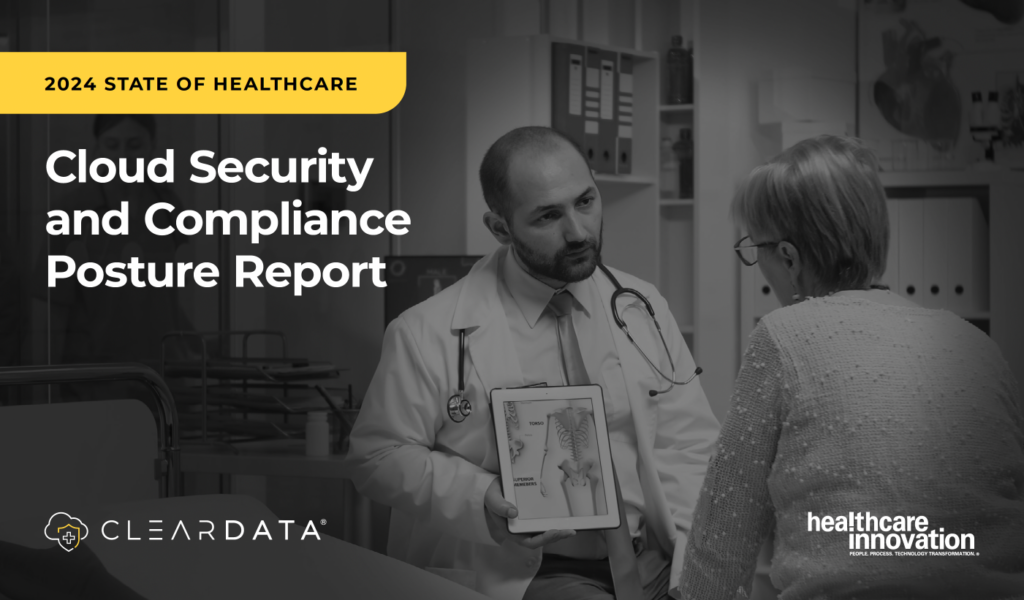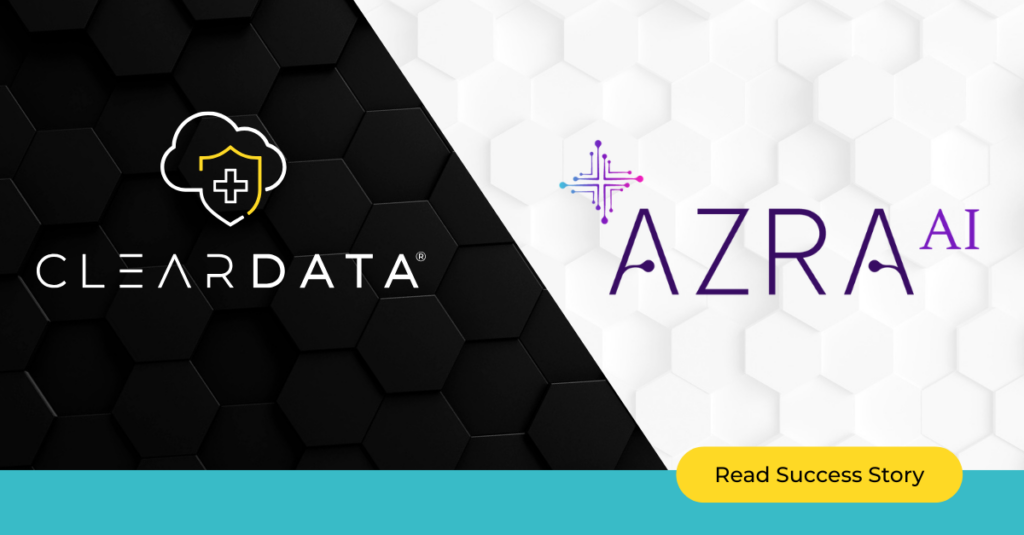
Cloud Security Glossary
Basic Terms, Definitions, and Examples for Healthcare IT, Compliance, and Security Leaders
Healthcare cybersecurity involves protecting sensitive health data, systems, and devices from cyber threats. As organizations increase their reliance on cloud computing, remote care technologies, and electronic health records, the need for strong cybersecurity frameworks becomes even more urgent.
This guide outlines the most critical healthcare, cybersecurity, compliance, and technical terms to know—whether you’re an IT leader, CISO, compliance manager, or business executive navigating the intersection of digital transformation and healthcare regulation.
Healthcare Industry Acronyms & Key Terms
PHI – Protected Health Information
PHI includes any information about a patient’s health status, the provision of care, or payment for healthcare that can be linked to an individual. This includes data like diagnoses, treatments, medical records, or insurance billing tied to a specific person.
PII – Personally Identifiable Information
PII refers to data that can identify a person either directly or when combined with other data. This includes names, birth dates, addresses, Social Security numbers, and biometric data.
PMPM – Per Member Per Month
A standard cost allocation model used by payers and health systems that calculates costs based on the number of enrolled members.
ACO – Accountable Care Organization
A network of healthcare providers that coordinates patient care to improve outcomes and reduce healthcare costs.
EHR – Electronic Health Record
A digital version of a patient’s comprehensive medical chart that can be accessed and shared across providers and healthcare systems.
EMR – Electronic Medical Record
A digital record maintained within a single healthcare provider’s system. It’s often a precursor to broader EHR platforms.
HIE – Health Information Exchange
A secure system or network that enables the sharing of patient data across different healthcare organizations.
HHS – Department of Health and Human Services
HHS is the primary U.S. federal agency overseeing healthcare programs like Medicare and Medicaid. It also enforces HIPAA and funds public health research and services.
CMS – Centers for Medicare & Medicaid Services
A division within HHS responsible for administering Medicare, Medicaid, and CHIP. CMS sets rules around billing, quality reporting, and compliance for healthcare providers.
HITECH – Health Information Technology for Economic and Clinical Health Act
Enacted in 2009, this law promotes the adoption of EHRs and enhances HIPAA privacy and security standards, especially regarding data breach notifications and penalties for noncompliance.
Medical Device Security / IoMT – Internet of Medical Things
Refers to the protection of connected medical technologies like insulin pumps, heart monitors, and imaging systems. These devices collect and transmit PHI and must be secured to prevent breaches and ensure patient safety.
Cybersecurity Acronyms & Concepts
MDR – Managed Detection and Response
A managed cybersecurity service that provides 24/7 threat monitoring, detection, and rapid incident response to reduce risk exposure.
CDR – Cloud Detection and Response
Cloud Detection and Response is a security approach and set of tools designed to continuously monitor cloud environments for suspicious activity, detect threats in real time, and respond quickly to potential incidents.
SOC – Security Operations Center
A centralized team or facility that continuously monitors, detects, and responds to security threats in real time.
SIEM – Security Information and Event Management
A security technology platform that collects and analyzes event data from across the IT environment to detect anomalies and alert teams to potential threats.
IAM – Identity and Access Management
A system of policies and tools that ensure only authorized users can access specific systems, data, or applications.
Zero Trust Architecture
A security framework where no user, system, or application is trusted by default. All access requests must be continuously verified and authenticated.
Threat Intelligence
The gathering and analysis of information about cyber threats and adversaries to improve threat detection, response, and decision-making.
Incident Response
A structured process for identifying, containing, mitigating, and recovering from cybersecurity incidents or breaches.
MTTR / MTTI – Mean Time to Respond / Identify
MTTR refers to how long it takes to resolve a threat, while MTTI tracks how quickly it is detected. Both are key security performance indicators.
Risk Posture
An organization’s overall security standing based on its vulnerabilities, current threat environment, and implemented controls.
RTO / RPO – Recovery Time Objective / Recovery Point Objective
RTO is how quickly you must recover systems after a disruption. RPO is the maximum acceptable amount of data loss measured in time.
Deepfake
Synthetic media—such as a video, image, or audio recording—created using artificial intelligence (AI) techniques like deep learning. Deepfakes can convincingly manipulate or fabricate someone’s likeness, voice, or actions, often making it appear as though they said or did something they never actually did.
Vishing (Voice Phishing)
Vishing is a form of social engineering attack that uses phone calls or voice messages to trick individuals into revealing sensitive information, such as login credentials, financial details, or personal data.
Cloud Computing & Infrastructure Terms
Public, Private, and Hybrid Cloud
These refer to the different deployment models for cloud computing. Public cloud is hosted by third-party providers; private cloud is hosted privately; hybrid cloud blends both.
Multi-Cloud
An approach where an organization uses multiple cloud service providers (e.g., AWS, Azure, GCP) to diversify risk or improve functionality.
Cloud Native
Applications and systems designed specifically to run in a cloud environment for better scalability and performance.
Infrastructure as Code (IaC)
A practice that uses code and automation to provision and manage cloud infrastructure securely and efficiently.
DevSecOps
An extension of DevOps that integrates security directly into software development and deployment workflows.
CSPM – Cloud Security Posture Management
Tools and practices that continuously monitor cloud environments for misconfigurations and compliance violations.
AWS / Azure / GCP
The three major public cloud platforms: Amazon Web Services, Microsoft Azure, and Google Cloud Platform.
Container Security
Protecting software containers (such as Docker or Kubernetes) from vulnerabilities throughout their lifecycle.
Isolated Recovery Environments (IRE)
Highly secure backup systems separated from production environments to recover from ransomware or destructive attacks.
Healthcare Regulatory & Compliance Acronyms
HIPAA – Health Insurance Portability and Accountability Act
Sets national standards for protecting PHI, including privacy, security, and breach notification requirements.
HITECH, or the Health Information Technology for Economic and Clinical Health Act
US federal law that promotes the adoption and meaningful use of health information technology, particularly electronic health records (EHRs). It aims to improve healthcare quality, enhance patient safety, and protect the privacy and security of electronic health information.
HITRUST – Health Information Trust Alliance
A widely adopted security framework for certifying compliance with HIPAA, HITECH, and other regulations.
OCR – Office for Civil Rights
A division of HHS responsible for enforcing HIPAA privacy and security rules.
NIST CSF – National Institute of Standards and Technology Cybersecurity Framework
A voluntary framework for improving cybersecurity posture across critical infrastructure sectors, including healthcare.
PHI / ePHI
(See earlier section.) ePHI specifically refers to PHI in electronic form.
PCI-DSS – Payment Card Industry Data Security Standard
Security standards for handling credit card data, which may apply to healthcare payers.
GDPR – General Data Protection Regulation
European Union regulation that governs data privacy and applies to healthcare organizations with international patients.
405(d) Program
A public-private partnership under HHS to align cybersecurity best practices in healthcare.
Risk Management & Governance Terms
SRA – Security Risk Assessment
A formal evaluation of security risks and vulnerabilities, required under HIPAA.
GRC – Governance, Risk, and Compliance
A unified strategy for managing overall compliance, security policies, and organizational risk.
Business Associate Agreement (BAA)
A legal agreement between a covered entity and a third party that handles PHI, outlining responsibilities for HIPAA compliance.
Data Loss Prevention (DLP)
Technologies and policies that prevent sensitive data from leaving the organization.
Compliance Framework
A structured set of guidelines and requirements that define how an organization maintains regulatory compliance.
Third-Party Risk
The potential risk introduced by vendors or service providers with access to PHI or internal systems.
Risk Register
A tool for tracking and managing all identified cybersecurity and compliance risks within an organization.
Continuous Compliance
An approach that uses automation and monitoring to ensure compliance requirements are met in real time, not just during audits.
AI, Automation & Emerging Technologies
LLM – Large Language Model
A type of artificial intelligence trained to understand and generate human language—used in applications like ChatGPT.
LLM Jacking
A security risk where an LLM is manipulated to produce incorrect or harmful outputs, often by injecting malicious inputs.
AI-Driven Threat Detection
Using artificial intelligence to detect anomalies and threats faster than traditional systems.
Machine Learning
A subset of AI that enables systems to improve their performance over time through data patterns.
Anomaly Detection
Identifying unusual patterns in system behavior that may indicate a threat.
Automated Remediation
The automatic resolution of known security issues without manual intervention.
Cloud Orchestration
Automating the management and coordination of cloud services, often for scalability and compliance.
Security-as-Code
Embedding security policies directly into infrastructure and application code to ensure consistency and repeatability.
Agentic AI
Systems designed to act autonomously—planning, deciding, and executing complex multi-step tasks with little to no human supervision. These systems perceive their environment, assess context, adapt strategies, and orchestrate actions across tools and APIs to achieve specified goals.
Traditional AI
Responding to user prompts or inputs within predefined parameters. While proficient at pattern recognition or generating content, it lacks initiative or real-time adaptability beyond its training or explicit instructions.
Healthcare-Specific Terms (Revisited)
Many of the terms below were previously mentioned, but are essential to understanding healthcare-specific cybersecurity:
- EHR / EMR – Electronic patient records
- HIE – Secure data exchange networks
- HHS / CMS – Federal oversight agencies
- Payer / Provider – Healthcare insurance vs. care delivery organizations
- Claims Data – Insurance data related to patient services
- IoMT – Connected medical devices needing robust security
Operational & Financial Metrics
TCO – Total Cost of Ownership
The full cost of a system or product, including implementation, maintenance, and support.
ROI – Return on Investment
A performance measure evaluating the efficiency or profitability of an investment.
SLA – Service-Level Agreement
A formal agreement that defines the expected service performance, uptime, and issue resolution timelines.
Uptime / Downtime
Measures of how available and operational a system is versus how often it is unavailable.
MTTD – Mean Time to Detect
The average time it takes to identify a cybersecurity incident.
MTTF – Mean Time to Failure
The average time until a system fails, used to predict and prevent downtime.
FinOps
A financial operations model that helps organizations manage and optimize cloud spending while maintaining compliance and performance.
Sales & Procurement Evaluation Terms (for Buyers)
MSSP – Managed Security Services Provider
A vendor that provides outsourced monitoring and management of security systems and incidents.
MSP – Managed Service Provider
A Managed Service Provider is a third-party company that remotely manages a customer’s IT infrastructure and end-user systems, typically on a proactive, subscription-based model
RFP – Request for Proposal
A document that solicits vendor bids for solutions or services.
MSA – Master Services Agreement
A contract that defines the terms between a service provider and a customer over multiple projects or services.
Shared Responsibility Model
A cloud security model that clarifies which responsibilities lie with the cloud provider vs. the customer (e.g., AWS, Azure, GCP).
Healthcare Cybersecurity Alphabet Soup
As a healthcare cybersecurity professional, knowing these cybersecurity terms arms you to anticipate threats, meet regulations without hesitation, and keep patient trust rock-solid.
Use this glossary as your quick-launch toolkit to lead with confidence in an industry where security and speed define success.
Take the Next Step in Securing Healthcare Data in the Cloud


